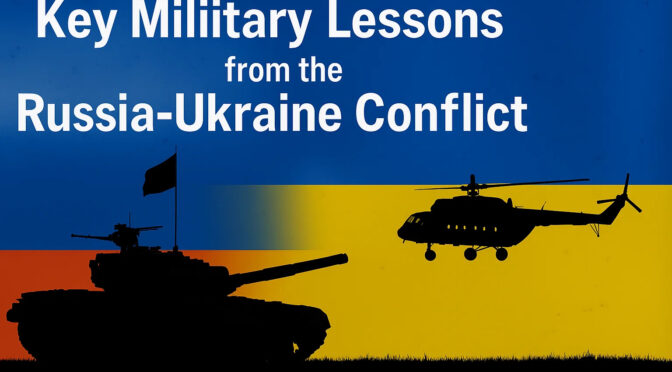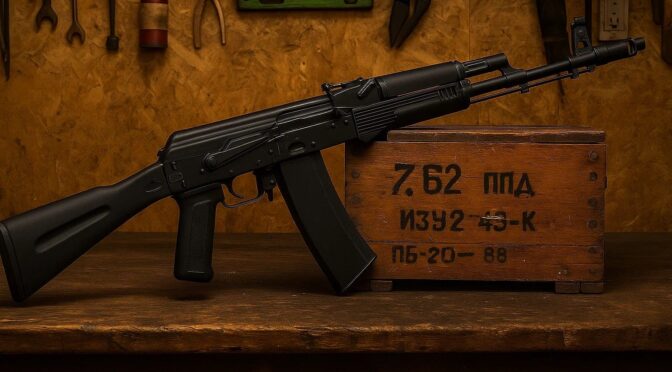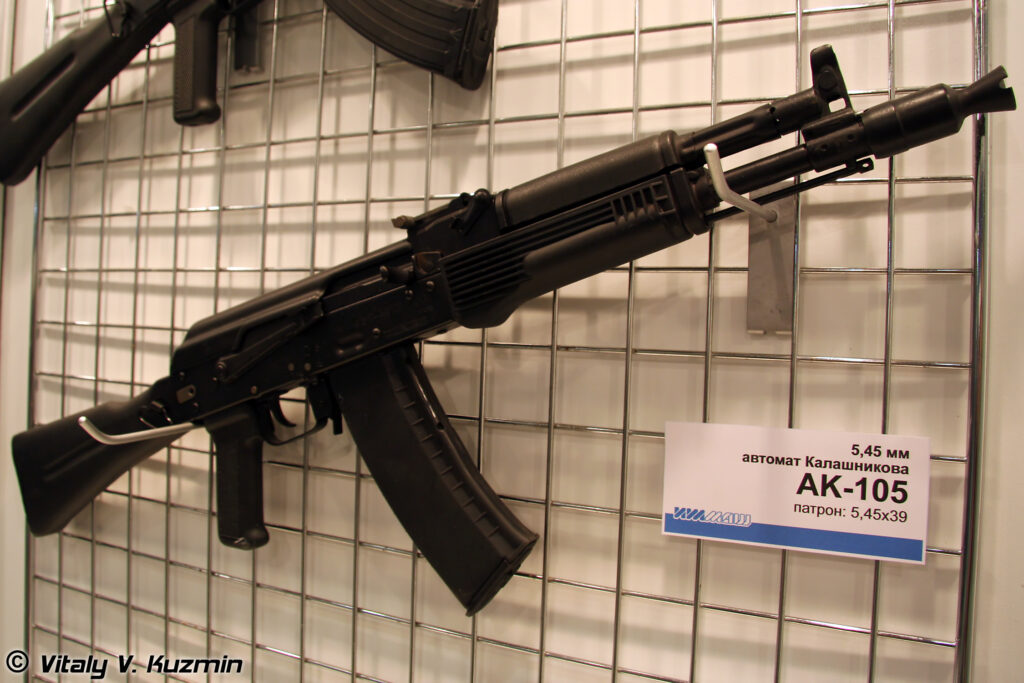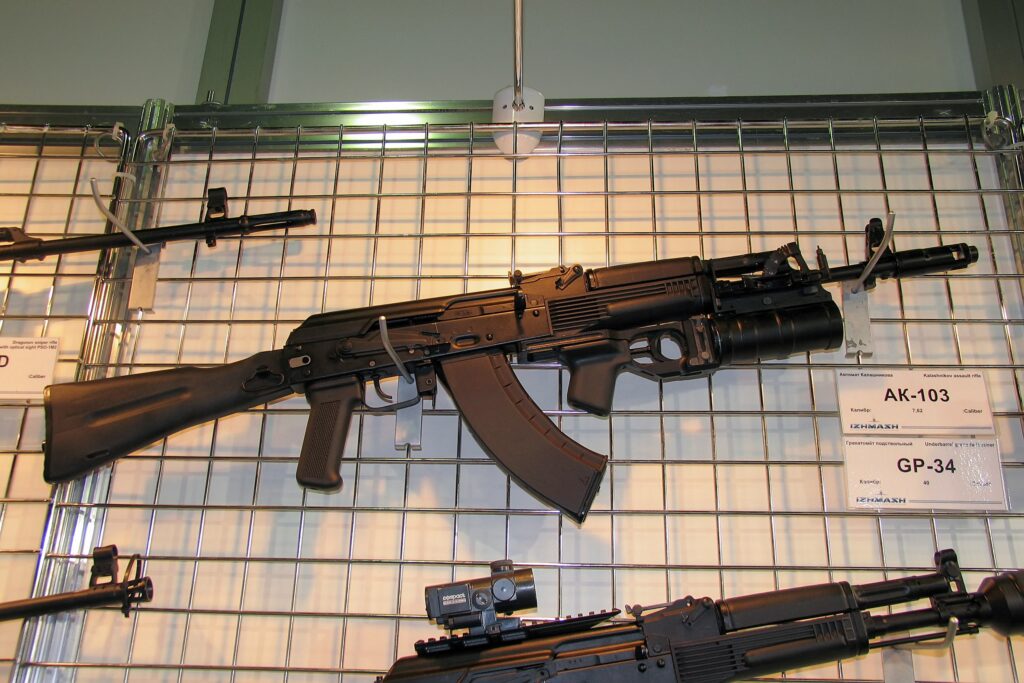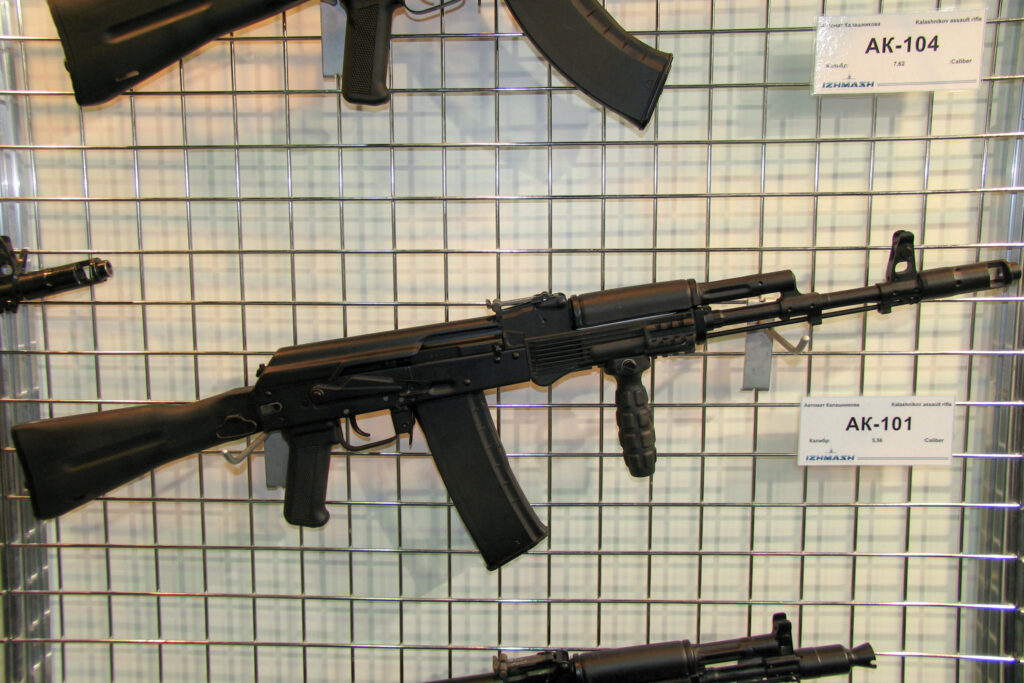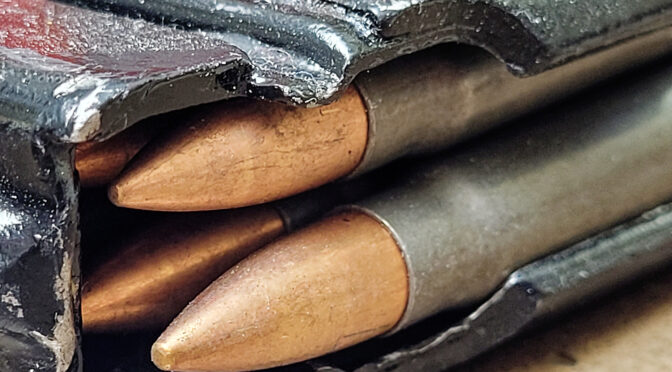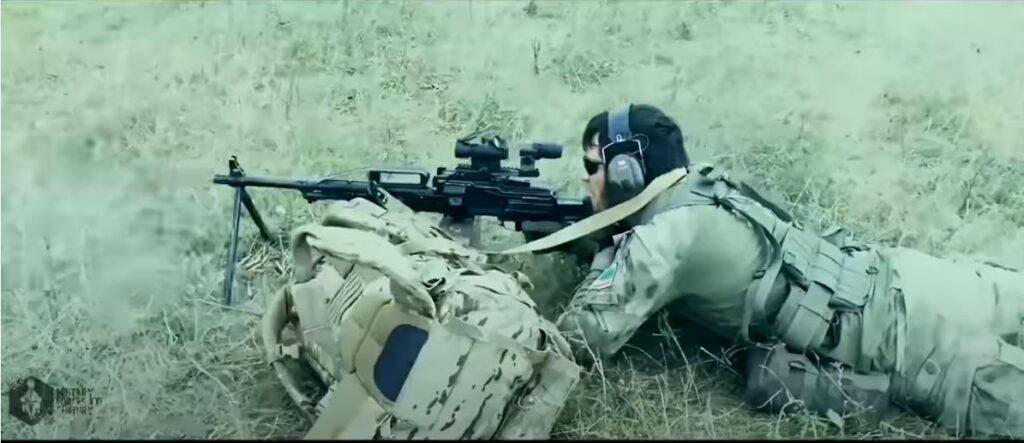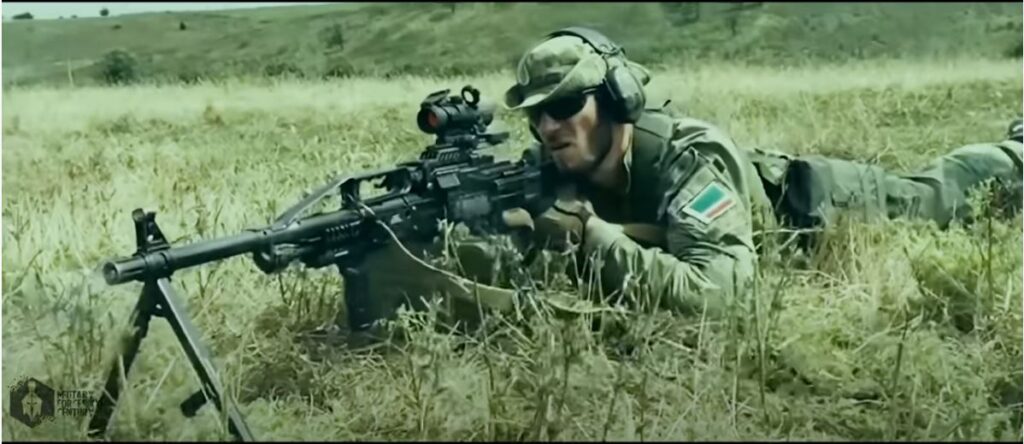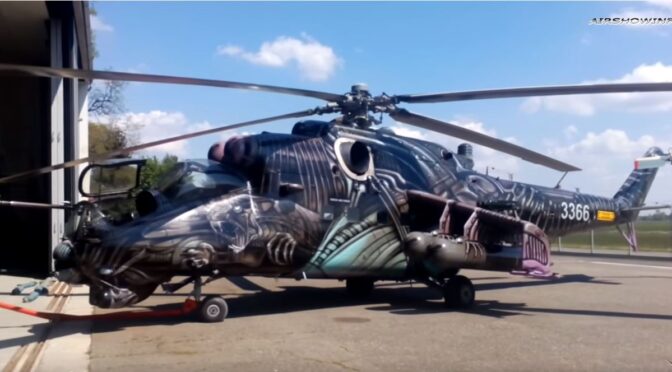- Overall Fragility Score: 8.0 (on a scale of 1-10, where 10 is Collapsed)
- Lifecycle Stage Assessment: CRISIS
Key Drivers of Fragility:
- Fragmentation of Coercion: The deliberate erosion of the state’s monopoly on violence and the creation of competing, personally loyal security factions have made a violent succession crisis or internal conflict a high-probability event.
- Fiscal Bleed-Out: An unsustainable “war economy” is cannibalizing the state’s sovereign wealth and long-term productive capacity to fund non-productive military expenditures, creating a self-reinforcing cycle of fiscal and economic decay.
- Demographic Collapse: The confluence of war casualties, a mass exodus of skilled professionals (“brain drain”), and long-term negative demographic trends is creating a demographic void that will cripple Russia’s economic and military potential for generations.
- Hollowing Out of State Capacity: The singular focus on the war effort is leading to the systemic degradation of civilian industry, public services, and non-military infrastructure, particularly in the regions, widening socio-economic divides and fraying the fabric of the federation.
- Forecast Trajectory: Rapidly Deteriorating. The Russian Federation is assessed to be in a brittle state of crisis, having lost the resilience to absorb significant shocks. The system is primed for non-linear decay, with a high probability of a rapid transition toward state failure or collapse within the 36-month forecast horizon, contingent on the emergence of specific political, military, or economic tipping points.
State Fragility Dashboard
| Domain/Indicator | Current Score (1-10) | Trend (Δ) | Volatility | Weighted Impact (%) | Brief Rationale & Key Data Points |
| B.3 Security Apparatus Cohesion | 9 | ↓ | High | 25% | The 2023 Wagner mutiny set a precedent for challenging the state’s monopoly on violence. Subsequent integration of Wagner remnants into competing structures (Rosgvardia, GRU, Akhmat) institutionalizes fragmentation and creates new friction points. 1 |
| B.1 Governance & Rule of Law (Elite Fragmentation) | 8 | ↑ | High | 15% | Intense, albeit covert, infighting between siloviki factions over resources and blame for war failures. The system’s stability is dangerously personalized, lacking institutional resilience. A purge of senior officials is underway. 3 |
| A.1 Public Finances | 8 | ↓↓ | High | 15% | The budget deficit is projected to reach 6-7 trillion rubles, far exceeding targets. The National Wealth Fund’s liquid assets face depletion within 6-12 months at current burn rates, forcing reliance on inflationary financing or mass borrowing. 5 |
| A.2 Economic Structure & Productivity | 8 | ↓ | Medium | 12% | A forced regression to a primitive war economy is destroying human capital and the technological base. Civilian industrial output is shrinking, and dependency on Chinese imports for strategic goods is acute. 7 |
| C.1 Social Fragmentation | 8 | ↓↓ | Medium | 10% | A demographic “death spiral” is underway, accelerated by war casualties (est. 219,000+ killed by Aug 2025) and a brain drain of over 800,000 skilled citizens. Disproportionate mobilization in ethnic republics is fueling deep resentment. 9 |
| A.3 Household Financial Health | 7 | ↓ | Medium | 8% | The Putin-era social contract (prosperity for political acquiescence) is void. High inflation on basic goods (food at 12.7%) erodes real incomes for the general population, masked by massive payments to the military sector. 11 |
| C.2 Public Services & Welfare | 7 | ↓ | Low | 5% | The 2025 budget institutionalizes austerity for non-military sectors. Real-terms funding for healthcare and education is being cut as all resources are diverted to the war effort, leading to a slow decay of state capacity in the regions. 13 |
| B.2 State Legitimacy & Public Trust | 7 | ↓ | Medium | 5% | The sheer scale of political repression and censorship laws is an inverse indicator of genuine public trust. The regime is trapped by its own maximalist propaganda, precluding any diplomatic off-ramps. 15 |
| D.1 Climate Change Vulnerability | 7 | ↓ | Medium | 3% | Permafrost thaw poses a direct, near-term threat to up to 70% of the oil and gas infrastructure that provides the state’s primary revenue stream, creating a feedback loop between environmental decay and fiscal insolvency. 17 |
| D.2 Resource Stress & Degradation | 7 | ↓ | Low | 2% | The “resource curse” is fully manifest. Prioritization of extraction over regulation leads to chronic environmental disasters (e.g., Norilsk), imposing massive, uncounted long-term costs on the state and its people. 18 |
| OVERALL FRAGILITY SCORE | 8.0 | 100% | |||
| Assessed Lifecycle Stage: | CRISIS |
Detailed Domain Analysis
Module A: Economic Resilience and State Capacity – The Cannibalistic War Economy
The Russian Federation’s economy has been fully subordinated to the war effort, transforming into a system that consumes its own long-term potential to sustain short-term military output. This “war economy” is not a sustainable model but a rapid, self-cannibalizing process that is accelerating systemic fragility.
A.1 Public Finances
The state’s fiscal position is acutely unstable. Massive, non-productive military spending has created a structural deficit that is being financed through the rapid depletion of sovereign wealth and increased burdens on the population, rendering the state dangerously vulnerable to external shocks.
- Current State: The federal budget is in a state of severe distress. For the first half of 2025, the deficit reached 3.4% of GDP, double the year’s planned target.19 Projections for the full year indicate a deficit between 6 and 7 trillion rubles ($78-91 billion), or approximately 2.6% of GDP, far exceeding the government’s revised target of 1.7%.5 This fiscal hemorrhage is a direct result of a dual shock: a massive, front-loaded increase in military expenditures and a simultaneous 14.4% year-on-year decline in oil and gas revenues as of May 2025.5
- Trajectory (Δ): The trajectory is one of rapid deterioration (↓↓). The primary buffer, the National Wealth Fund (NWF), is being liquidated at an alarming rate to plug the deficit. The liquid portion of the NWF stood at just 3.95 trillion rubles ($48 billion) as of August 2025.6 Independent analysis suggests these liquid assets could be fully depleted within 6 to 12 months at current expenditure rates, forcing the government to choose between mass domestic borrowing—crowding out any remaining private investment—or direct monetary financing (printing money), which would trigger hyperinflation.6
- Volatility: Volatility is high. The budget’s solvency is acutely dependent on global energy prices. The 2025 budget is predicated on an optimistic average oil price of around $70 per barrel.23 However, market futures and analyses factoring in sanctions enforcement and slowing global demand project an average price closer to $55 per barrel. Such a shortfall would carve an additional 3 trillion rubles from annual revenues, pushing the deficit toward 5% of GDP.24 The state’s efforts to circumvent the G7 price cap through a “shadow fleet” and third-country intermediaries face mounting costs and increasing Western pressure on enablers, adding further uncertainty to revenue streams.25 The Central Bank of Russia (CBR) has been forced into a reactive posture, maintaining a high key interest rate to fight inflation and support the ruble, but its decision to cease publishing exchange rate forecasts signals profound uncertainty and a loss of confidence in its own ability to manage stability.26
A.2 Economic Structure & Productivity
The war has triggered a forced structural regression of the Russian economy. A pivot to a primitive war footing is destroying the country’s human capital, isolating it technologically, and reversing decades of modernization, locking it into a long-term trajectory of stagnation and decline.
- Current State: The economy is undergoing a process of de-complexification. Civilian industrial output has been shrinking by approximately 0.8% per month in 2025 as capital, labor, and resources are redirected to the military-industrial complex (MIC).7 The MIC’s growth, while propping up headline GDP figures, produces no long-term economic value; its output is destined for destruction on the battlefield.23 Sanctions have severed access to Western technology, forcing a reliance on lower-quality Chinese imports for strategic goods. This dependency is stark: in 2024, an estimated 98.3% of machine tools were imported, with China’s share of total Russian imports surging from 23% in 2021 to 57% in 2024.8
- Trajectory (Δ): The structure of the economy is steadily degrading (↓). The most critical factor is the irreversible loss of human capital. The combination of military mobilization (removing an estimated 1 million men from the workforce), war casualties, and the emigration of over 800,000 predominantly young, highly educated professionals since 2022 has created a severe labor shortage of approximately 3% of the total workforce.30 This “brain drain” has permanently damaged Russia’s potential for innovation in high-value sectors such as IT, finance, and science.31
- Volatility: Volatility in this domain is medium. While the long-term trend is clearly negative, the state’s ability to command and control economic resources can create short-term pockets of stability in the defense sector. However, the civilian economy remains highly vulnerable to supply chain shocks and the growing technological gap with the West.
A.3 Household Financial Health
The Putin-era social contract, which traded political freedoms for rising living standards, has been definitively voided. While state payments to military-affiliated households create a facade of prosperity, the broader population is bearing the economic costs of the war through declining real incomes and a deteriorating quality of life.
- Current State: Official statistics present a misleadingly positive picture, claiming real disposable income growth of 8.6% in 2024 and a historic low poverty rate of 7.2%.33 These figures are heavily skewed by massive, one-off state payments to contract soldiers and their families, as well as by artificially inflated wages in the overheating defense sector.11 For the majority of the population in the civilian economy, the reality is one of stagflation. Experienced inflation on basic goods is significantly higher than official figures; for example, food price inflation was recorded at 12.7% year-on-year in April 2025, compared to a headline rate of 10.2%.12 Household debt remains elevated at over 20% of GDP, and the annual growth rate of new loans is slowing as high interest rates begin to bite.37
- Trajectory (Δ): The financial health of the average Russian household is deteriorating (↓). As the state’s fiscal capacity diminishes (see A.1), its ability to sustain massive social payments will wane. The government is already shifting costs to the populace through measures like a proposed 2% VAT hike, which will further fuel inflation and erode purchasing power.20 Public sentiment reflects this anxiety, with two-thirds of Russians describing the country’s economic outlook for 2025 as “stressful”.39
- Volatility: Volatility is medium. The state’s ability to direct large payments to specific segments of the population can temporarily boost sentiment and consumption, but this is not a substitute for broad-based, sustainable economic growth. The underlying trend is negative and vulnerable to fiscal shocks.
Module B: Political Legitimacy and Institutional Integrity – The Praetorian State
The Russian political system has devolved into a hyper-personalized autocracy, where formal institutions have been hollowed out and stability rests entirely on the leader’s ability to manage competing factions within a fragmented security apparatus. This “praetorian state” is inherently brittle and prone to violent fracture upon any significant shock to the leadership.
B.1 Governance and Rule of Law
Power has become dangerously concentrated and personalized, eroding all institutional resilience. The elite, bound by fear rather than loyalty, is fractured, while the rule of law has been fully subordinated to the political needs of the regime.
- Current State: Elite cohesion is a facade. Multiple sources indicate a deep sense of fatigue, disappointment, and anxiety among political and business elites over the war’s continuation into 2025.3 While overt dissent is impossible due to the risk of asset seizure or physical elimination 40, clear fault lines exist between a “war party” of hardline siloviki demanding total mobilization and a “peace party” of technocrats and business leaders suffering from the economic consequences.3 The Kremlin has responded with a significant internal purge, using the FSB to arrest nearly 100 senior officials on corruption charges in the first half of 2025, a move interpreted as enforcing loyalty through fear.4 The rule of law is non-existent; legislation is now purely an instrument of repression, with laws on “discrediting the army” and “foreign agents” continuously expanded to criminalize any opposition.15
- Trajectory (Δ): Elite fragmentation is increasing (↑). As the costs of the war mount and the prospects for victory dim, the blame-game among factions will intensify. The central government’s accelerated centralization of power and resources at the expense of the regions is creating further friction, particularly with powerful regional leaders in ethnic republics.42
- Volatility: Volatility is high. The system’s stability is entirely dependent on the person of the leader. Any perception of weakness, or his sudden removal from the scene, would likely trigger an open and violent power struggle between the competing factions he currently balances.
B.2 State Legitimacy and Public Trust
The regime’s actions demonstrate a profound lack of confidence in its own popular legitimacy. It relies not on genuine support but on a combination of propaganda-induced passivity and coercive enforcement.
- Current State: Official state-controlled polling, which reports presidential approval at 87% and support for the army’s actions at 78%, is of limited analytical value in a climate of intense repression.44 Independent pollsters acknowledge the severe limitations imposed by “preference falsification,” where respondents provide socially desirable answers out of fear.45 A more telling indicator is that a record 66% of Russians now state a preference for peace talks over continued fighting.44 The most reliable metric of legitimacy is the state’s own behavior: a regime confident in its support does not need to criminalize dissent, block messaging apps, or imprison thousands for peaceful protest.46 The scale of repression is thus an inverse indicator of genuine public trust.
- Trajectory (Δ): Legitimacy is steadily eroding (↓). The state is caught in a “propaganda trap.” Having framed the conflict in existential, maximalist terms, it cannot de-escalate or compromise without this being perceived as a catastrophic defeat, which would shatter the regime’s entire justification for the war.16 This forces the state to pursue increasingly costly objectives, further eroding the economic well-being that once underpinned its popular support.
- Volatility: Volatility is medium. While mass public uprising is unlikely in the short term due to the effectiveness of the repressive apparatus, public acquiescence is shallow and could evaporate quickly in the event of a major military defeat or a visible fracturing of the elite.
B.3 Security Apparatus Cohesion
This is the most critical domain and the primary driver of the Russian Federation’s fragility score. The regime has deliberately sacrificed its monopoly on the legitimate use of force for the sake of short-term political survival, creating the conditions for a potential cascade failure.
- Current State: The state’s monopoly on violence is functionally broken. The June 2023 Wagner Group mutiny was a seminal event, demonstrating that a well-armed non-state actor could challenge the authority of the Ministry of Defense and march on the capital with impunity . The Kremlin’s response was not to re-centralize coercive power but to institutionalize its fragmentation. Former Wagner fighters, possessing significant combat experience, have been parceled out to multiple, competing power centers: the Rosgvardia (under Putin’s loyalist Viktor Zolotov), the GRU’s newly formed “Africa Corps,” and Ramzan Kadyrov’s Akhmat forces, which are personally loyal to Putin but operate with significant autonomy.1 This has created a dangerous ecosystem of parallel armies.
- Trajectory (Δ): The cohesion of the coercive apparatus is deteriorating (↓). The regular military is being bled white in Ukraine, with casualties projected to surpass 1 million in summer 2025.48 This attritional slaughter degrades morale and creates deep resentment toward a political leadership perceived as incompetent. Meanwhile, the newly empowered PMCs and personal militias are gaining resources, combat experience, and political influence, creating a multi-polar security environment where loyalty is personal, not institutional.
- Volatility: Volatility is high. This fragmented system is a tinderbox awaiting a spark. A shock to the system—such as a major military defeat or the death of the head of state—would remove the sole arbiter balancing these factions. The result would not be an orderly succession but a high-probability, multi-sided violent struggle for power between the very groups armed to protect the regime.
Module C: Social Cohesion and Human Development – The Demographic Void
The war is catastrophically accelerating a pre-existing demographic collapse, hollowing out Russia’s human capital and creating deep social fissures that threaten the long-term integrity of the state.
C.1 Social Fragmentation
Russia is experiencing a demographic catastrophe that will have profound and lasting consequences for its economic potential and state power. This is compounded by deepening ethnic and regional cleavages.
- Current State: The country is in a demographic death spiral. The war has compounded decades of low birth rates and high mortality.31 The estimated 219,000+ combat deaths as of August 2025, combined with the exodus of approximately 800,000 young, educated, and skilled citizens, has torn a massive hole in the male population of working and reproductive age.9 The national birth rate has fallen to 1.41 children per woman, well below the replacement rate of 2.1.50 Tellingly, Russia’s state statistics agency, Rosstat, has reportedly ceased publishing certain regional demographic data, suggesting the reality may be even worse than officially acknowledged.51
- Trajectory (Δ): Social fragmentation is rapidly worsening (↓↓). The burden of mobilization has been placed disproportionately on impoverished ethnic minority republics. A young man from Buryatia or Tuva is up to 100 times more likely to die in Ukraine than a resident of Moscow.10 This has generated intense resentment and is fueling anti-colonial and separatist sentiment within these communities.43 Concurrently, the war economy is exacerbating the urban-regional divide, with Moscow and other defense-industry hubs experiencing a boom while the rest of the country faces population decline and economic stagnation.55
- Volatility: Volatility is medium. While demographic trends are slow-moving, the acute grievances related to disproportionate mobilization could serve as a trigger for widespread social unrest, particularly if combined with an external shock like a military defeat.
C.2 Public Services and Welfare
The subordination of the entire state budget to the war effort is leading to the slow-motion collapse of public services and welfare, particularly in the regions. This “rotting from the inside” undermines state capacity and fuels popular discontent.
- Current State: The 2025 federal budget represents a formal declaration of priorities: war above all else. Planned expenditures on social welfare are set to decrease by nearly 16% year-on-year.13 Funding for crucial sectors like healthcare and education will see only nominal increases, which, given an inflation rate for services of nearly 13%, amounts to a significant cut in real terms.12 This is the direct opportunity cost of dedicating over 40% of the budget to defense and security.7
- Trajectory (Δ): The quality and availability of public services are steadily declining (↓). As the federal government shifts an increasing share of the burden for social spending onto regional governments while simultaneously reducing federal transfers to them, the decay of hospitals, schools, and non-military infrastructure will accelerate.13 This hollowing out of state capacity, while less visible than a military mutiny, progressively erodes the state’s ability to perform its core functions for its citizens.
- Volatility: Volatility is low. This is a chronic, grinding process of decay rather than a source of acute shocks. However, it contributes significantly to the background level of systemic stress and regional grievance.
Module D: Environmental and Resource Security – Foundational Risk Accelerants
Long-term environmental stressors are not peripheral concerns but are acting as direct accelerants of state fragility, creating powerful feedback loops that connect ecological decay with fiscal insolvency.
D.1 Climate Change Vulnerability
Climate change poses an immediate and existential threat to the physical infrastructure that underpins the Russian state’s financial viability.
- Current State: Approximately two-thirds of Russian territory, including the vast majority of its oil and gas fields and transportation infrastructure, is built on permafrost.17 The Arctic is warming at least 2.5 times faster than the global average, causing this once-frozen ground to thaw, heave, and collapse. An estimated 70% of Russia’s Arctic energy infrastructure—pipelines, storage tanks, and processing facilities—is now at high risk of structural failure due to this instability.17 The increasing frequency and intensity of extreme weather events, such as the massive Siberian wildfires of 2024 and 2025, further damage infrastructure and release vast quantities of carbon, accelerating the warming in a dangerous feedback loop.58
- Trajectory (Δ): The risk to critical infrastructure from climate change is steadily increasing (↓). The state’s capacity to mitigate these risks is severely hampered, as financial resources and political attention are entirely consumed by the war. The costs of reinforcing or relocating this vast network of infrastructure are estimated in the trillions of rubles, a sum the fiscally-strained state cannot afford.17
- Volatility: Volatility is medium. While the underlying trend is gradual, the potential for a sudden, catastrophic infrastructure failure—a major pipeline rupture or the collapse of a large storage facility—is a high-impact “black swan” event that could occur at any time.
D.2 Resource Stress and Environmental Degradation
The state’s economic model is predicated on a “resource curse” that incentivizes environmental neglect, leading to chronic pollution and imposing massive, often uncounted, long-term costs.
- Current State: The regime’s prioritization of resource extraction at all costs has created zones of extreme environmental degradation. The 2020 Norilsk diesel spill is a paradigmatic example. The collapse of a fuel tank, caused by a combination of thawing permafrost and corporate negligence, released 17,500 tonnes of diesel into Arctic waterways, resulting in a cleanup bill of $2 billion.18 The area around Norilsk, a center for nickel production, is one of the most polluted places on Earth; the soil is so contaminated with heavy metals that it is reportedly commercially viable to mine it.60
- Trajectory (Δ): Environmental degradation is worsening (↓) as regulatory oversight is weakened in the name of economic expediency and sanctions-busting. The state has neither the capacity nor the political will to enforce environmental standards on the powerful state-linked corporations that form its revenue base.
- Volatility: Volatility is low. Industrial pollution is a chronic, grinding problem rather than an acute trigger of state collapse. However, it contributes to the overall decay of public health and quality of life, adding to background social stress.
Synthesis and Predictive Outlook
The Russian Federation is no longer a stressed system; it is a system in an active state of crisis. Its apparent stability is a facade, masking deep structural rot and the institutionalization of its own failure modes. The analysis of the interconnected subsystems reveals not a state muddling through, but one locked in a series of reinforcing, negative feedback loops that are accelerating its trajectory toward collapse.
Critical Feedback Loops: The Engines of Decay
Three vicious cycles are particularly critical in driving the system’s degradation.
- The Praetorian Trap (Political-Military Vicious Cycle): This is the most acute and dangerous feedback loop.
- Initial Condition: The regime, facing external pressure and declining domestic legitimacy, perceives the conventional military (Ministry of Defense) as a potential threat.
- State Action: To coup-proof itself, the leadership deliberately empowers and resources parallel security structures with personalistic loyalty chains—first the Wagner Group, then an expanded Rosgvardia, and Kadyrov’s Akhmat forces.1 This action intentionally erodes the state’s formal monopoly on violence.
- Systemic Reaction: These empowered factions, armed and combat-experienced, become competing centers of power. They clash over resources, influence, and blame for military failures, as seen in the public feud between Wagner and the MoD .
- Reinforcing Loop: The mutiny by one faction (Wagner) reveals the extreme danger of this strategy. However, the leadership’s response is not to re-establish a single chain of command but to double down on fragmentation, breaking up the rogue element and distributing its assets among the other competing factions.2 This act further institutionalizes the fragmentation of coercion. The state’s stability now rests entirely on the leader’s personal ability to act as the arbiter between these armed groups. The system has lost all institutional resilience, making a violent, multi-sided power struggle the most probable outcome of a leadership succession or another major shock.
- The Fiscal-Demographic Doom Loop (Socio-Economic Vicious Cycle): This loop is eroding the fundamental human and financial resources of the state.
- Initial Condition: The state commits to a large-scale, high-attrition war.
- State Action: The war requires two primary inputs: money and men. The state funds the war by liquidating its sovereign wealth and diverting all investment from the productive civilian economy.5 It mans the army through mobilization, disproportionately drawing from younger, regional, and ethnic minority populations.10
- Systemic Reaction: This action has two devastating consequences. First, the “fiscal bleed-out” cripples the non-military economy, shrinking the long-term tax base and preventing any future growth.28 Second, the “demographic bleed-out” via casualties and brain drain permanently removes the most productive and reproductive cohort from the population.9
- Reinforcing Loop: A shrinking, less productive economy generates less tax revenue. A shrinking population provides fewer soldiers and workers. This forces the state to resort to more coercive mobilization tactics and more desperate fiscal measures (higher taxes on a shrinking base, money printing) to sustain the same war effort. These measures, in turn, accelerate brain drain and further damage the economy, creating a self-reinforcing spiral of state weakening.
- The De-Complexification Spiral (Techno-Economic Vicious Cycle): This loop is destroying Russia’s long-term potential to function as a modern state.
- Initial Condition: Sanctions cut Russia off from Western technology, capital, and markets.
- State Action: The regime pivots the economy toward a primitive war footing, prioritizing the mass production of low-tech military hardware (shells, basic tanks) over all else.23
- Systemic Reaction: The country’s human capital (engineers, scientists, entrepreneurs) either flees the country or is re-tasked to the inefficient, technologically stagnant military-industrial complex.31 The civilian economy is starved of investment and becomes wholly dependent on lower-quality Chinese technology.8
- Reinforcing Loop: As the economy becomes less technologically advanced and its workforce less skilled, its ability to innovate or compete globally in any high-value sector is destroyed. This locks Russia into being a simple resource-exporting state. This deepens its vulnerability to global commodity price shocks and makes it entirely dependent on the physical infrastructure (pipelines) for its revenue, which is itself being degraded by climate change—a problem the de-complexified economy has no capacity to solve.17
Reasonable Worst-Case Scenario (36-Month Horizon): “The Shattering”
This scenario is not a prediction but a plausible, high-impact cascade failure constructed from the identified systemic vulnerabilities and feedback loops. It outlines a potential pathway from the current Crisis stage to Collapse.
- Trigger (Months 0-12): A confluence of a major, successful Ukrainian offensive and a leadership shock. The Ukrainian military achieves a strategic breakthrough, leading to the collapse of a section of the front and the chaotic retreat or encirclement of tens of thousands of Russian troops. The scale of the defeat is undeniable and shatters the Kremlin’s narrative of impending victory. Amidst the ensuing political turmoil in Moscow, the head of state dies suddenly or is incapacitated (e.g., assassination, severe health event).
- Cascade (Months 12-18): The “Praetorian Trap” is sprung. With the central arbiter gone, the latent conflict between security factions erupts. A hardline faction within the military and FSB, blaming the political leadership for the defeat, attempts to seize power in Moscow to “save Russia.” They are immediately opposed by forces personally loyal to the previous regime, primarily the Rosgvardia and Kadyrov’s Akhmat units. Key military units are recalled from the front, not to defend Russia, but to fight for control of the capital. Moscow becomes a conflict zone.
- Systemic Collapse (Months 18-36): As central authority dissolves in a multi-sided civil conflict in the capital, the state’s coercive control over the vast periphery evaporates. Regional governors, some now commanding their own recently legalized militias, are faced with a choice: remain loyal to a non-existent center or secure their own domains. Most choose the latter. They declare “emergency powers,” seize control of federal assets and resource flows on their territory, and effectively establish independent fiefdoms. Ethnic republics with deep-seated grievances over disproportionate mobilization and economic neglect—such as Dagestan, Tuva, and Buryatia—are the first to formally declare sovereignty, backed by local militias and defecting military units. The Russian Federation ceases to function as a unitary state, shattering into a mosaic of competing, often-warring territories controlled by regional strongmen, military commanders, and siloviki factions. Core state functions—pension payments, federal law enforcement, national infrastructure maintenance—cease entirely.
Tipping Points and Final Assessment
The Russian Federation’s placement in the CRISIS stage is justified by its loss of systemic resilience. The state’s survival is now contingent on the avoidance of major shocks, as its internal balancing mechanisms have been dismantled. The transition from Crisis to Collapse is unlikely to be gradual; it will be rapid, chaotic, and non-linear, triggered by the crossing of one or more of the following tipping points.
Political/Military Tipping Points:
- The successful assassination or sudden death/incapacitation of the head of state or another key silovik figure (e.g., the directors of the FSB or Rosgvardia).
- A second military mutiny that is either more successful, better organized, or involves a larger contingent of the regular army than the 2023 Wagner affair.
- A catastrophic, undeniable military defeat in Ukraine resulting in the rapid loss of significant territory and the capture of a large number of Russian forces.
Economic Tipping Points:
- A sustained collapse in global energy prices (e.g., Brent crude below $40/barrel for over six months) combined with a successful international crackdown on sanctions-evading shipping, leading to an acute currency crisis and the state’s inability to meet its core obligations (paying soldiers, security forces, and pensioners).
- The complete exhaustion of the liquid assets of the National Wealth Fund, forcing the government into hyper-inflationary monetary financing that destroys public savings and triggers mass economic panic.
Social Tipping Points:
- Widespread, coordinated, and violent anti-mobilization protests erupting simultaneously across multiple regions, particularly in ethnic republics, which overwhelm or win the sympathy of local internal security forces (Rosgvardia), leading to a loss of state control.
Concluding Assessment:
The Russian Federation is a system under unsustainable stress. The feedback loops of political fragmentation, fiscal decay, and demographic collapse are mutually reinforcing and accelerating. While the regime’s repressive apparatus can maintain a facade of control in the short term, the underlying structural integrity of the state has been compromised. The system has been optimized for the short-term survival of the current leadership at the direct expense of long-term state viability.
Given the acute fragility of the security apparatus and the brittleness of the hyper-personalized political system, the probability of a systemic shock triggering a rapid, non-linear transition toward the “Shattering” scenario (or a variant thereof) within the 36-month forecast horizon is assessed as high (60-75% probability). The state is no longer merely stressed; it is in a pre-collapse crisis, where its continued existence in its current form is contingent on factors increasingly outside of its control.
If you find this post useful, please share the link on Facebook, with your friends, etc. Your support is much appreciated and if you have any feedback, please email me at in**@*********ps.com. Please note that for links to other websites, we are only paid if there is an affiliate program such as Avantlink, Impact, Amazon and eBay and only if you purchase something. If you’d like to directly contribute towards our continued reporting, please visit our funding page.
Sources Used
- The Kremlin’s Dilemma: Effectiveness versus Loyalty in the Case of …, accessed October 7, 2025, https://www.ponarseurasia.org/the-kremlins-dilemma-effectiveness-versus-loyalty-in-the-case-of-prigozhins-wagner-pmc/
- Where’s Wagner Now? One Year after the Mutiny – PONARS Eurasia, accessed October 7, 2025, https://www.ponarseurasia.org/wheres-wagner-now-one-year-after-the-mutiny/
- ‘We expected the war to end’ How Russian political elites feel about …, accessed October 7, 2025, https://meduza.io/en/feature/2025/01/09/we-expected-the-war-to-end
- Putin ERADICATES Generals While FSB is CANNIBALIZING Russia – YouTube, accessed October 7, 2025, https://www.youtube.com/watch?v=YGj-PscVAHU
- Russia’s Budget Deficit Up Fivefold Over 2024 – Finance Ministry …, accessed October 7, 2025, https://www.themoscowtimes.com/2025/06/10/russias-budget-deficit-up-fivefold-over-2024-finance-ministry-a89405
- Budget Deficit Rises Sharply as Revenues Drop, the Economy Stalls, and Expenditures Continue to Soar – KSE Sanctions, accessed October 7, 2025, https://sanctions.kse.ua/en/budget-deficit-rises-sharply-as-oil-and-gas-revenues-drop-the-economy-stalls-and-expenditures-continue-to-soar/
- Putin’s War Economy Reaches Limit, accessed October 7, 2025, https://istories.media/en/stories/2025/10/02/putins-war-economy-reaches-limit/
- The dependence gap in Russia-China relations | European Union …, accessed October 7, 2025, https://www.iss.europa.eu/publications/reports/dependence-gap-russia-china-relations
- Russia’s Current Demographic Crisis Is Its Most Dangerous Yet …, accessed October 7, 2025, https://carnegieendowment.org/russia-eurasia/politika/2025/09/russia-new-demographic-crisis?lang=en
- Full article: The mechanisms of forced military enlistment amid the …, accessed October 7, 2025, https://www.tandfonline.com/doi/full/10.1080/17450101.2025.2512375?src=
- A Leap Instead of Growth: The abnormal surge of Russians’ incomes over the past two years may end with a return to stagnation – Re: Russia, accessed October 7, 2025, https://re-russia.net/en/analytics/0225/
- Russia Inflation Rate: Outlook & Data – FocusEconomics, accessed October 7, 2025, https://www.focus-economics.com/country-indicator/russia/inflation/
- Russia’s budget for 2025: war above all | OSW Centre for Eastern …, accessed October 7, 2025, https://www.osw.waw.pl/en/publikacje/osw-commentary/2024-11-22/russias-budget-2025-war-above-all
- Bloomberg’s reported 2025 Russian government budget will cause recession, economist warns – The Insider, accessed October 7, 2025, https://theins.ru/en/news/274886
- Russia: New Attacks on Rights | Human Rights Watch, accessed October 7, 2025, https://www.hrw.org/news/2025/01/16/russia-new-attacks-rights
- Advantages of the connective strategic narrative during the Russian–Ukrainian war, accessed October 7, 2025, https://www.frontiersin.org/journals/political-science/articles/10.3389/fpos.2025.1434240/full
- Melting Permafrost in Siberia is Threatening Russia’s Energy …, accessed October 7, 2025, https://www.irreview.org/articles/2025/3/29/melting-permafrost-in-siberia-is-threatening-russias-energy-industry
- Norilsk oil spill – Wikipedia, accessed October 7, 2025, https://en.wikipedia.org/wiki/Norilsk_oil_spill
- Russian federal budget deficit at 3.4% of GDP in H1 – Mishustin – Interfax, accessed October 7, 2025, https://interfax.com/newsroom/top-stories/113508/
- Russia’s Planned VAT Hike Expected to Push Inflation Higher, Finance Ministry Says – The Moscow Times, accessed October 7, 2025, https://www.themoscowtimes.com/2025/10/06/russias-planned-vat-hike-expected-to-push-inflation-higher-finance-ministry-says-a90729
- Russia’s National Wealth Fund falls 10.1 bln rubles in July to 13.08 trln rubles, liquid assets 1.8% of GDP – Interfax, accessed October 7, 2025, https://interfax.com/newsroom/top-stories/113105/
- A final countdown: At the current rate, the Kremlin will exhaust its …, accessed October 7, 2025, https://theins.ru/en/economics/284735
- New Budget Confirms the Russian Public Is Paying for the War, accessed October 7, 2025, https://carnegieendowment.org/russia-eurasia/politika/2025/09/russian-economy-forecast?lang=en
- Falling oil prices reduce Russia’s budget revenues – Bank of …, accessed October 7, 2025, https://www.bofbulletin.fi/en/blogs/2025/falling-oil-prices-reduce-russia-s-budget-revenues/
- Sanctions against Russia: What has changed in 2025? – UK Parliament, accessed October 7, 2025, https://researchbriefings.files.parliament.uk/documents/CBP-10342/CBP-10342.pdf
- Central Bank of Russia puts discussion of ruble exchange rate forecast publication on hold until next monetary policy review – Interfax, accessed October 7, 2025, https://interfax.com/newsroom/top-stories/113384/
- The Kremlin Has Limited Options to Shore Up the Ruble | Carnegie …, accessed October 7, 2025, https://carnegieendowment.org/russia-eurasia/politika/2024/12/russia-economy-ruble-trouble?lang=en
- Kremlin’s War Economy Driving Recession in Russia’s Regions, accessed October 7, 2025, https://jamestown.org/program/kremlins-war-economy-driving-recession-in-russias-regions/
- Early frosts – the Russian economy at the end of spring 2025, accessed October 7, 2025, https://nestcentre.org/early-frosts/
- Migration-Occupation Balance: The Kremlin motives behind limiting …, accessed October 7, 2025, https://re-russia.net/en/analytics/0231/
- The great Russian brain drain | George W. Bush Presidential Center, accessed October 7, 2025, https://www.bushcenter.org/catalyst/the-great-gray-wave/the-great-russian-brain-drain
- Can Russia’s brain drain weaken the regime? – Chatham House, accessed October 7, 2025, https://www.chathamhouse.org/events/all/research-event/can-russias-brain-drain-weaken-regime
- Unemployment in Russia remains at 2.3%, real disposable incomes grow 8.4% in 2024, accessed October 7, 2025, https://interfax.com/newsroom/top-stories/109659/
- Russian Disposable Income Levels Grew By 8.6% In 2024: Economic Analysis, accessed October 7, 2025, https://russiaspivottoasia.com/russian-disposable-income-levels-grew-by-8-6-in-2024-economic-analysis/
- Level of poverty in Russia falls to historic low of 7.2% in 2024 from …, accessed October 7, 2025, https://interfax.com/newsroom/top-stories/110336/
- Russia Inflation Rate: Outlook & Data – FocusEconomics, accessed October 7, 2025, https://www.focus-economics.com/country-indicator/russia/inflation
- Organisations and Households debt, extended | Bank of Russia, accessed October 7, 2025, https://www.cbr.ru/eng/statistics/macro_itm/dkfs/ext_dep_indicator/
- Russia Household Debt: % of GDP, 2000 – 2024 | CEIC Data, accessed October 7, 2025, https://www.ceicdata.com/en/indicator/russia/household-debt–of-nominal-gdp
- Expectations for 2025: hopes, assessments of … – Левада-Центр, accessed October 7, 2025, https://www.levada.ru/en/2025/01/14/expectations-for-2025-hopes-assessments-of-personal-situation-as-well-as-economic-and-political-situation-in-the-country/
- Russia’s Elite — Hold Onto Nurse for Fear of Something Worse – CEPA, accessed October 7, 2025, https://cepa.org/article/russias-elite-hold-onto-nurse-for-fear-of-something-worse/
- Russian 2022 war censorship laws – Wikipedia, accessed October 7, 2025, https://en.wikipedia.org/wiki/Russian_2022_war_censorship_laws
- The Kremlin’s Balancing Act: The War’s Impact On Regional Power …, accessed October 7, 2025, https://www.fpri.org/article/2025/02/the-kremlins-balancing-act-the-wars-impact-on-regional-power-dynamics/
- Looking Ahead at Russia’s Ethnic Republics in 2025 – The Moscow Times, accessed October 7, 2025, https://www.themoscowtimes.com/2025/01/07/looking-ahead-at-russias-ethnic-republics-in-2025-a87353
- Record Share of Russians Support Peace Talks, But Many Also …, accessed October 7, 2025, https://www.russiamatters.org/blog/record-share-russians-support-peace-talks-many-also-approve-russias-actions-ukraine
- On the question of the surveys in Russia – Левада-Центр, accessed October 7, 2025, https://www.levada.ru/en/2025/04/30/on-the-question-of-the-surveys-in-russia/
- Leftist Groups Across Russia Stage Protests Against Telegram …, accessed October 7, 2025, https://www.themoscowtimes.com/2025/09/03/leftist-groups-across-russia-stage-protests-against-telegram-whatsapp-call-blocking-a90415
- Russia: Activist Daria Kozyreva conviction for poetic anti-war protest exposes continued repression – Amnesty International, accessed October 7, 2025, https://www.amnesty.org/en/latest/news/2025/04/russia-activist-daria-kozyreva-conviction-for-poetic-anti-war-protest-exposes-continued-repression/
- Russia’s Battlefield Woes in Ukraine – CSIS, accessed October 7, 2025, https://www.csis.org/analysis/russias-battlefield-woes-ukraine
- Russia’s War in Ukraine: The Next Chapter – CSIS, accessed October 7, 2025, https://www.csis.org/analysis/russias-war-ukraine-next-chapter
- Demographics of Russia – Wikipedia, accessed October 7, 2025, https://en.wikipedia.org/wiki/Demographics_of_Russia
- Fertility and mortality in Russia – TAdviser, accessed October 7, 2025, https://tadviser.com/index.php/Article:Fertility_and_mortality_in_Russia
- No births, no deaths, no data Russia is pulling demographic stats from public view. What’s the Kremlin trying to hide? – Meduza, accessed October 7, 2025, https://meduza.io/en/feature/2025/07/14/no-births-no-deaths-no-data
- ECMI Minorities Blog. How Moscow ‘Eliminates’ Its National Minorities in the War with Ukraine, accessed October 7, 2025, https://www.ecmi.de/infochannel/detail/ecmi-minorities-blog-how-moscow-eliminates-its-national-minorities-in-the-war-with-ukraine
- Indigenous Anti-War Initiatives in Russia are Inherently Anti-Colonialist – Cultural Survival, accessed October 7, 2025, https://www.culturalsurvival.org/publications/cultural-survival-quarterly/indigenous-anti-war-initiatives-russia-are-inherently-anti
- Russia’s tale of two cities: How war deepened regional divides, accessed October 7, 2025, https://theins.ru/en/economics/284081
- The Economic Landscape of Russia in 2025 – Synergia Foundation, accessed October 7, 2025, https://synergiafoundation.org/2025/02/01/the-economic-landscape-of-russia-in-2025/
- The Arctic This Week Take Five: Week of 13 January, 2025, accessed October 7, 2025, https://www.thearcticinstitute.org/arctic-week-take-five-week-13-january-2025/
- 2024 Russian wildfires – Wikipedia, accessed October 7, 2025, https://en.wikipedia.org/wiki/2024_Russian_wildfires
- 2025 Russian wildfires – Wikipedia, accessed October 7, 2025, https://en.wikipedia.org/wiki/2025_Russian_wildfires
- Norilsk: Russia’s Frozen Pollution Capital – YouTube, accessed October 7, 2025, https://www.youtube.com/watch?v=vzKvWfdG3fY

